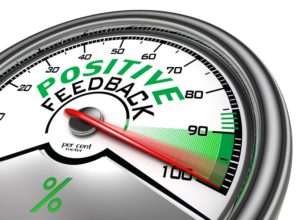In today’s workplace, one of the primary challenges that employers face is developing policies that adapt to multiple generations. It can be especially true when creating a strategy for performance reviews.
Each generation has distinct characteristics concerning:
● Motivational factors
● Preferences to office layout
● Type of workplace culture
● Work ethic
● Expectations
● Work/Life balance
Consequently, by using old cookie-cutter performance review templates, work performance evaluations can quickly become noneffective. In the past, annual reviews consist of two multi-page lists of questions – one for employee self-evaluation and one for managerial input. After the written portion is complete, both parties meet to discuss the results, and then the manager files the report until the following year. The employee has no way of knowing whether he or she is improving until the next review period. While this might have made sense in the Industrial Age when managers measured performance by specific numbers, such as total products packaged, it no longer fits in our multi-generational, team-oriented workplace.
In fact, according to various studies, the old system:
● Do not increase performance but invoke fear and serve as a power and control device.
● Do not take into consideration the amount of time an employee puts into their work or innovation they contribute to the company.
● Can be biased, depending on the manager-employee relationship.
● The entire process takes hours, often days to complete – time lost for servicing customers or improving production.
So, what’s the alternative?
Consider the following four alternatives – each which is adapted easily to generational styles:
1. Employee Conversations: A new term businesses use; it has no rating scale or paperwork; it’s merely a discussion between a manager and employee. The phrase replaces the negative (Employee Performance Review) with a positive, inclusive statement. It can include discussions on how satisfied the employee is with culture, workspace, and expectations, as well as how pleased you are with goals accomplished, work ethics, etc.
2. Routine “one-on-ones”: Long-term goals and performance can still have its place, but monthly or quarterly meetings offer the employee a chance to excel consistently. This process can build both employee skills and confidence as well as rapport between you and the employee.
3. Feedback in Real-Time: In addition to one-on-one, real-time feedback from staff or managers occurs when an issue arises, instead of waiting for the next review – be it quarterly, semi-annually, or yearly.
4. 360-Degree Reviews: Besides allowing feedback from immediate supervisors, open the feedback door to peers, and other staff members, and possibly customers. This process provides your employee with a 360-degree view of how others view their work and makes an excellent development tool.
Employee performance reviews are not a one-size-fits-all process. By allowing a conversational and team-oriented approach instead of a fear-based method, the employee gains real and timely feedback relevant to their position. It gives them a better chance to not only improve but also to excel while stimulating their creativity and innovation for your company.
Hiring the right talent helps improve employee accountability. Let Springborn Staffing find best-match talent. From temp staffing to direct hire, we have access to a broad base of candidates. We specialize in finding mutually beneficial connections between our candidates/associates and our clients. Trust Maine’s leading staffing provider – that’s us – and contact us today. We’ll make a difference. We do more than promise excellence. We stand behind our employees’ performance – 100% guaranteed.





